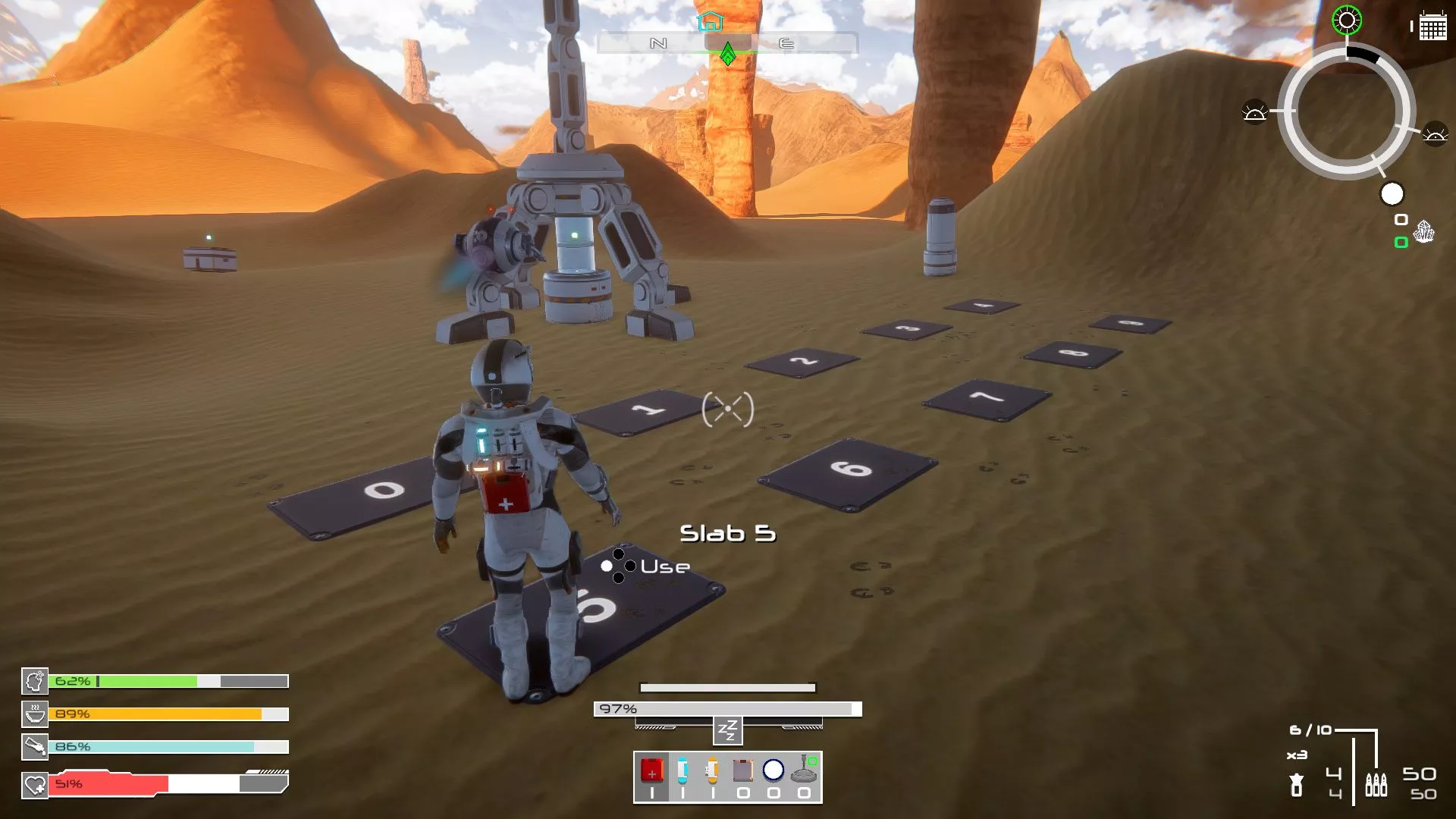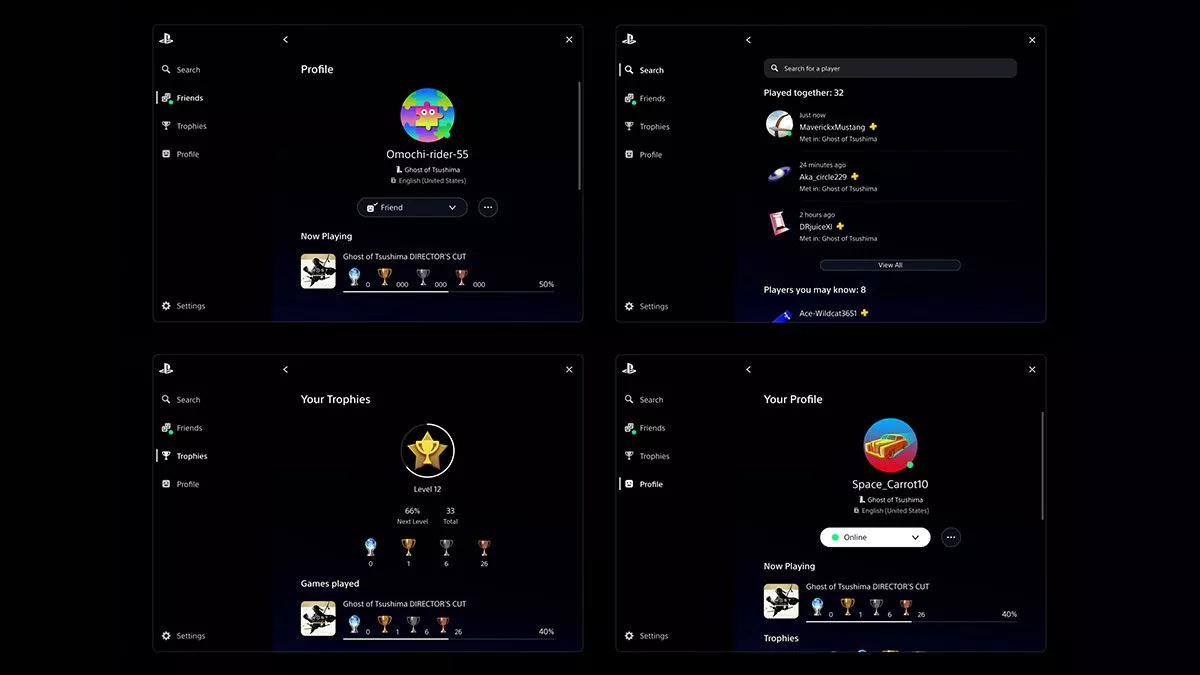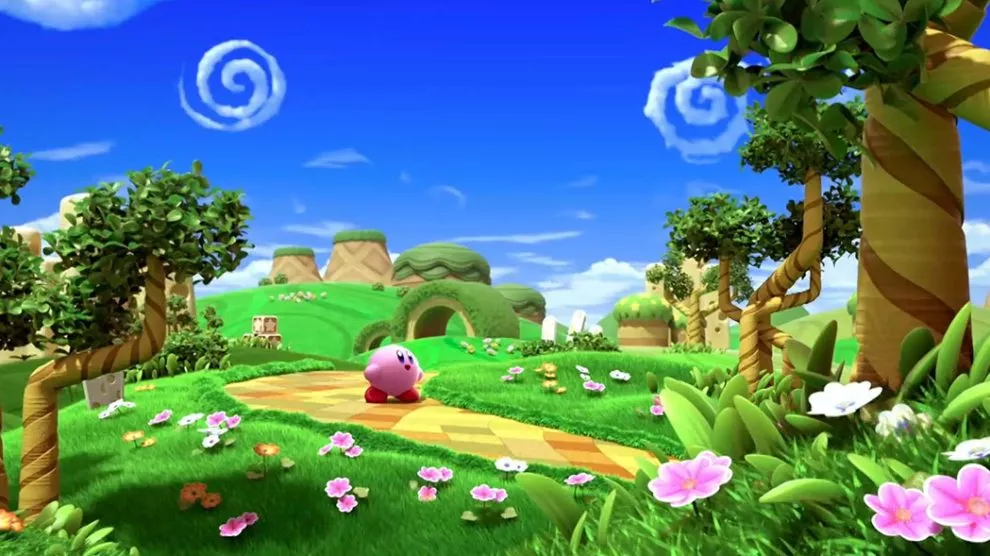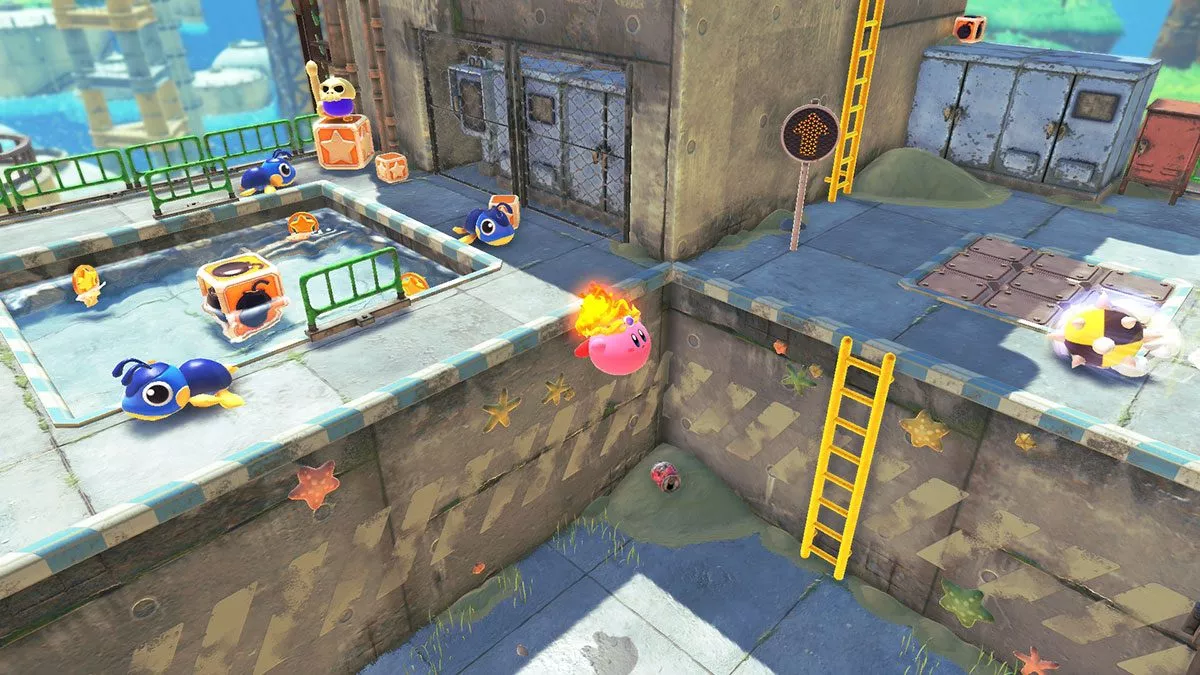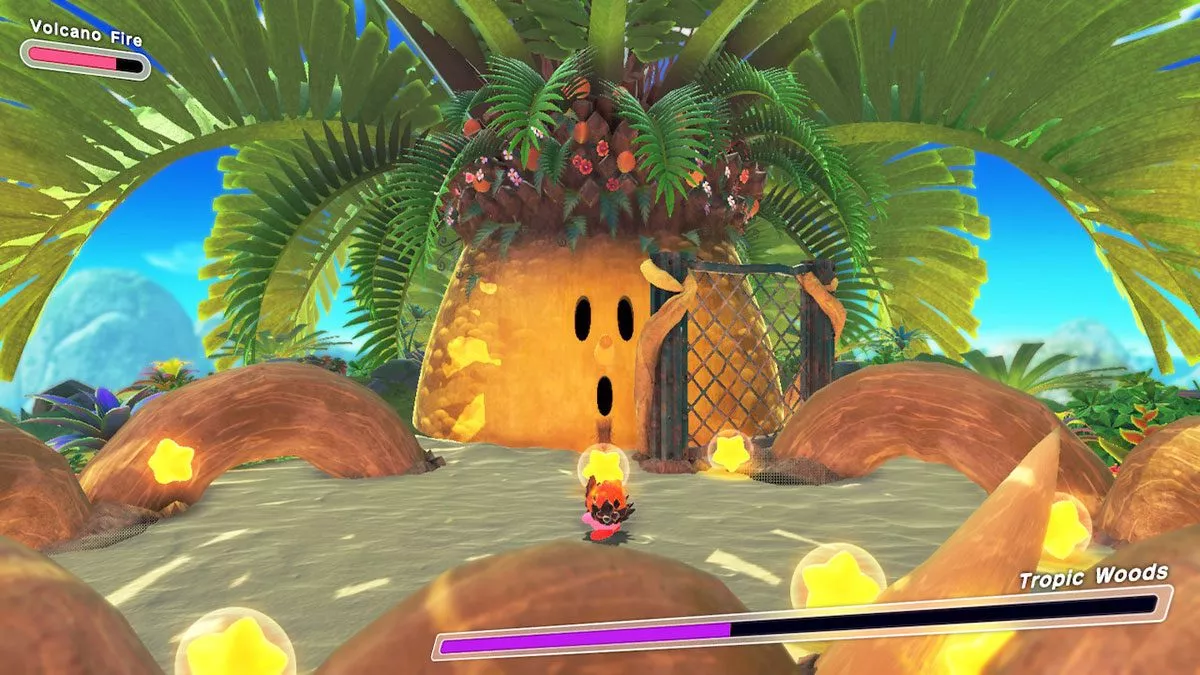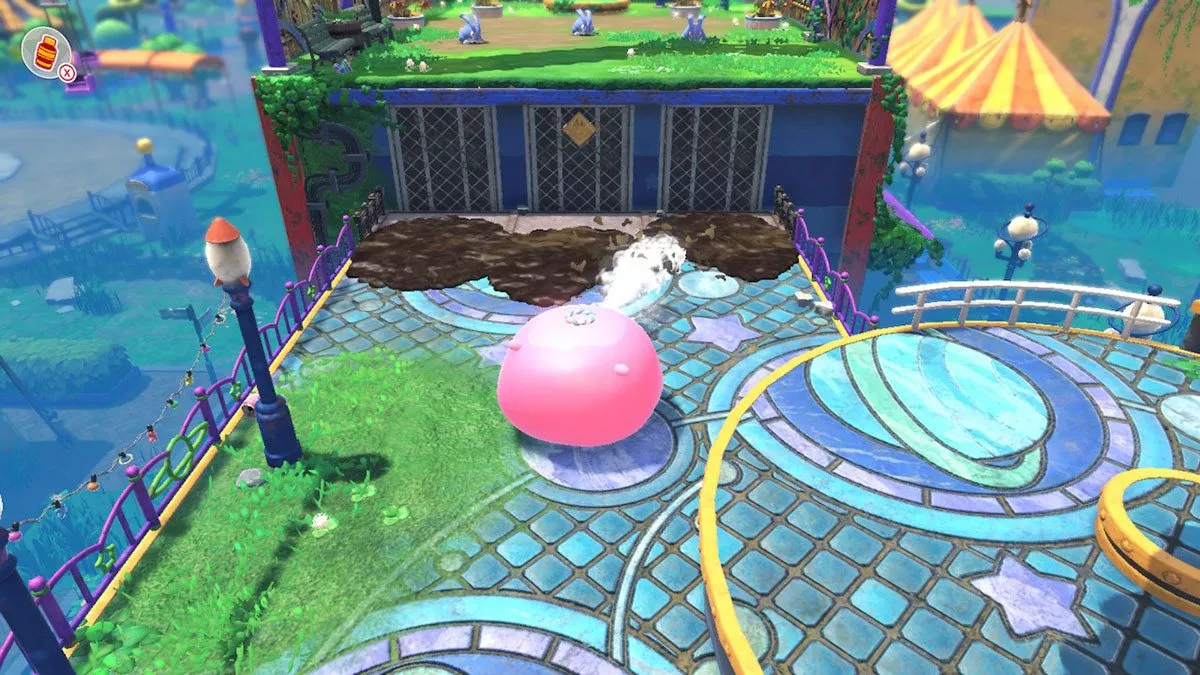From Dream Land to the Forgotten Land, Kirby finally gets a fully 3D adventure.
Three decades after floating into a Game Boy Dream Land, Kirby has finally expanded to full 3D with a combat-centric platformer that successfully transitions into an extra dimension. Kirby and the Forgotten Land takes the established swallow-and-fight formula from the traditionally 2D series and follows the Super Mario 3D World structure, with a healthy dose of inspiration from Crash Bandicoot, to create something delectable, as Kirby scoffs up burgers, donuts, ice creams… and cars.
The Mario comparison is aptly unavoidable, but that isn’t to say The Forgotten Land is mimicking a portly plumber, puffed up in pink. They play quite differently. It’s just that the level structure is almost identical, and so few games outside of the Super Mario 3D Land / 3D World duo have delivered such an infusion of 2D and 3D platforming. It suits Kirby perfectly.
Like those Mario games, Kirby and the Forgotten Land is a collection of linear stages that guide you along a predetermined route much like a side-scroller, with an added dimension to wander. The levels are confined and ultimately tunnel you from A-to-B, but with a little more room to move than Kirby’s left-to-right back catalogue, and a bevy of crafty enemies to defeat.
The Forgotten Land is a lot more combat than platformer focused, with Kirby’s relatively slow movement compensated for by gobbling up plenty of enemies and inheriting their iconic abilities. These range from a standard sword or hammer, to controlling fire or ice balls, and puffing up into a giant spike. There’s a nice variety, but they’re primarily either a close- or long-range attack. So there isn’t a drastic difference to how you approach wielding pistols, fireballs, bombs or boomerangs – they’re similar, only at different speeds – but hurling a tornado or hammer demands a close encounter.
It reminds me a little of Ratchet and Clank Rift Apart in that regard, as it’s typified as a platformer, but most of your time is spent dispatching enemies. Kirby’s ability to briefly fly gave developer HAL Laboratory a challenge avoided by Mario’s predicable jumping, which limits the opportunities for repeat platforming — in what little platform-to-platform design is here, it’s possible to bypass some simply by floating across, so it’s easy to see why.
Verticality is more often down than up, which is the reverse of what we are used to seeing, as Kirby can drop into a pit of peril to grab an item and just make it back to the surface. Whereas upward movements are very restricted for a character who isn’t grounded, resulting in Kirby relying on conveniently placed ladders. It’s a little strange to see Kirby constantly clinging to ladders to climb a step or two, but it’s clearly a measure to stop you flying over everything.
The roads, paths, trails and bridges connecting abandoned parks and overgrown malls funnel you towards enemies and clever puzzles, many of which are hiding in plain sight. The camera swings, dips and revolves around you through a variety of angles, ranging from the classic behind-the-back platformer, to an almost top-down view and everything in between. It’s quite cinematic in that respect, and is a rare platformer in a 3D space that doesn’t require you to fight against the camera – it almost always moves into the perfect position.
Kirby and the Forgotten Land is here for a good time, but not a long time, with six full worlds comprising of a handful of stages each. Even on the harder of the two difficulty settings, that is around 5 hours of gameplay. While not bang for buck, against my ever-increasing backlog of new releases demanding 50+ hours, I really enjoyed a series of short stages deigned for short bursts of play — it’s a great game to play for 15 minutes without missing a beat. However, there is a challenge mode of sorts that repurposes stages, and a boss run mode – although the mini bosses are repeated often enough that there’s no desire to face them yet again.
While they aren’t super long, there is replay value to blast through each stage a least twice due to the abundance of collectibles. Each level is home to several hidden creatures called Waddle Dees in need of rescuing. Some are hidden throughout the level, while others essentially become achievements, as they require certain conditions to be met, like defeating foes in a specific way.
Should you be inclined, it’s possible to run right past and finish the game with the bare minimum, but that just wouldn’t feel right. With its own spin on objectives, there are shades of Donkey Kong (gotta get those K.O.N.G letters) and Crash Bandicoot that compel you to find each stage’s hidden secrets. They’re joined by a bunch of novelty collectibles – if you’ve played Smash Bros, you’ll know HAL loves a virtual trophy, and there are loads of them to collect, even if they don’t really equate to anything.
Collecting coins enables Kirby to upgrade his standard abilities — think a bigger hammer and more furious flame — and that inevitably leads you to lean upon a couple of favourites. Between main stages, each world unlocks a series of time-based challenges based around a single ability called Treasure Road. These are easy to complete within the maximum time limit, but hard to master within the target time, and force you to try Kirby’s many different hats – but I found them to be more of a checkbox, with less incentive to return than the main stages. They pad out the gameplay and give you a secondary goal to strive for, but aren’t as compelling as Captain Toad’s escapades, which demanded a spin-off.
While Kirby’s regular transformations comprise the bulk of play, it’s the exaggerated Mouth Mode that garners all the attention. By pouncing on everyday objects considerably outside his weight range, the likes of Carby are born. These oversized power-ups can be obtained on a short-term basis without sacrificing Kirby’s current borrowed ability. Other regulars include controlling a staircase, a traffic cone to burst broken water pipes and ride the wave up, rolling around in a pipe, a ring to blow air, becoming a giant water balloon and moving a bookcase or manhole cover. Aside from the speed of the car, they don’t influence gameplay as much as I expected — but that also means they aren’t overused, with enough variety to feel fresh, even if it’s mainly a passing novelty.
While there are only six main worlds, they are all delightfully presented with the mandated blend of green jungle, snowy world, fire and desert landscape. They pop with that vibrant Nintendo charm, and look especially good on the Switch OLED in handheld mode. However, it does employ the common Switch technique of reducing the framerate of objects in the distance, and with an active camera that’s moving you in the right direct, your eye is drawn to the stuttering enemy at the top of screen. It disrupts an otherwise good looking game, and is far more noticeable than in other games. Perhaps it’s a concession we have to accept on an ageing handheld — but this is a rare Kirby game that hasn’t launched right at the end of a Nintendo platform’s lifecycle.
Kirby and the Forgotten Land is a delightfully delectable game – Kirby eats what he wants and takes you along for a short and sweet ride. The rare blend of linear levels following 2D guidelines, played in 3D, suits Kirby as well, if not better than, the Mario games that will draw comparisons. It’s a very different experience, however, as this is a combat game with elements of platforming, flipping Mario’s agenda. While it’s on the shorter side, the collection of well-designed stages are perfect for pick-up-and-play short burst gaming, and that’s exactly what I need right now.
Kirby and the Forgotten Land was reviewed using a promotional code on Nintendo Switch, as provided by the publisher. Click here to learn more about Stevivor’s scoring scale.
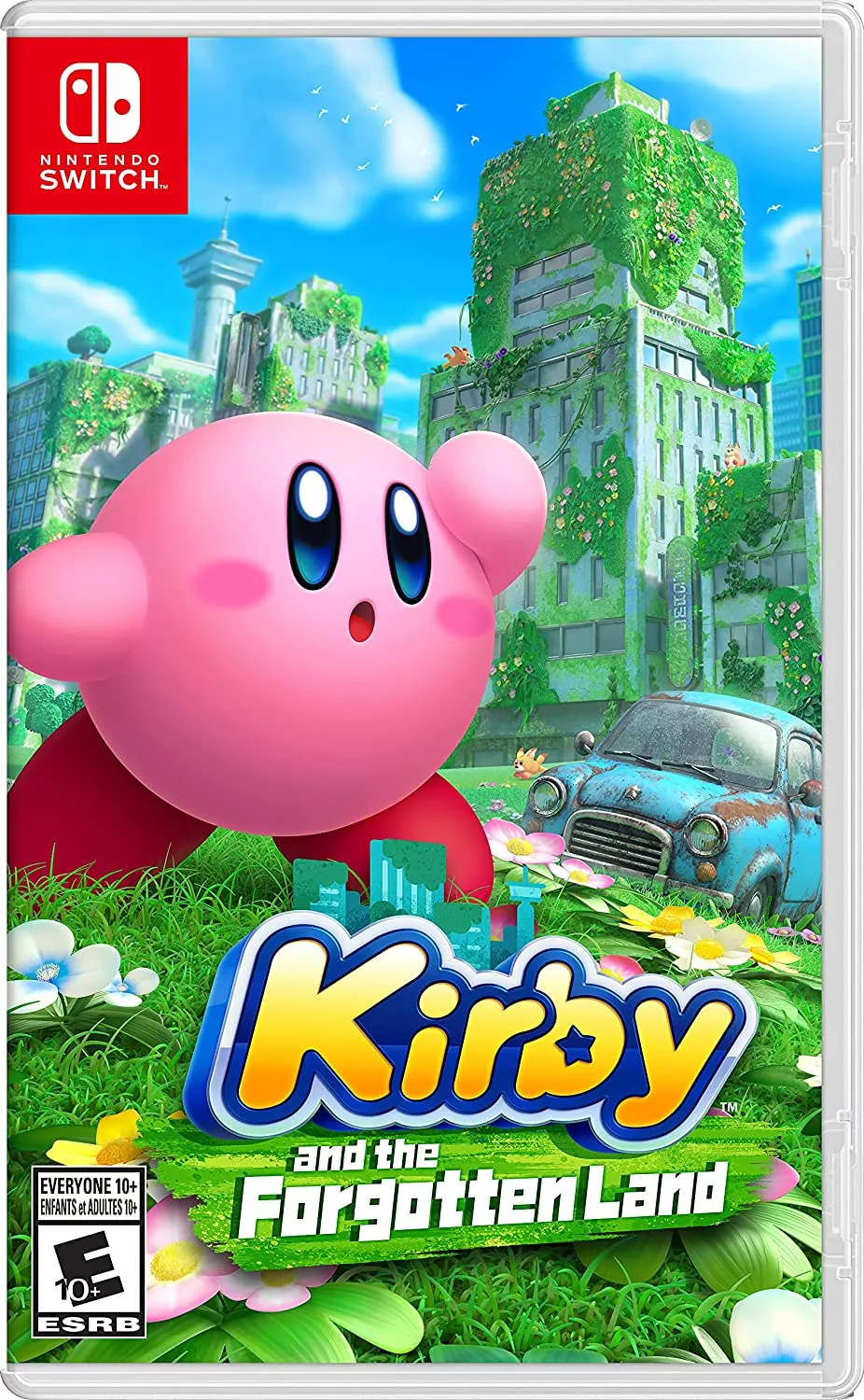 |
Kirby and the Forgotten Land25 March 2022Switch |
This article may contain affiliate links, meaning we could earn a small commission if you click-through and make a purchase. Stevivor is an independent outlet and our journalism is in no way influenced by any advertiser or commercial initiative.


